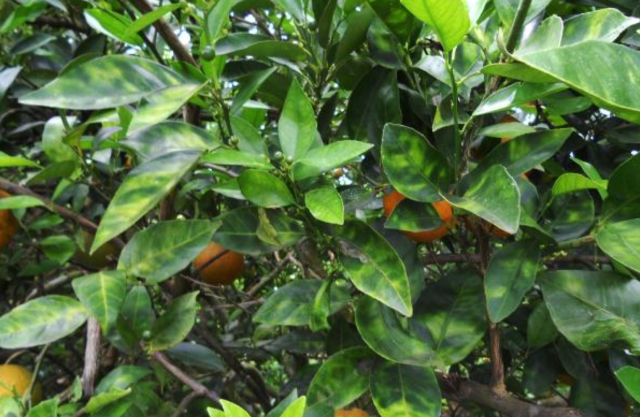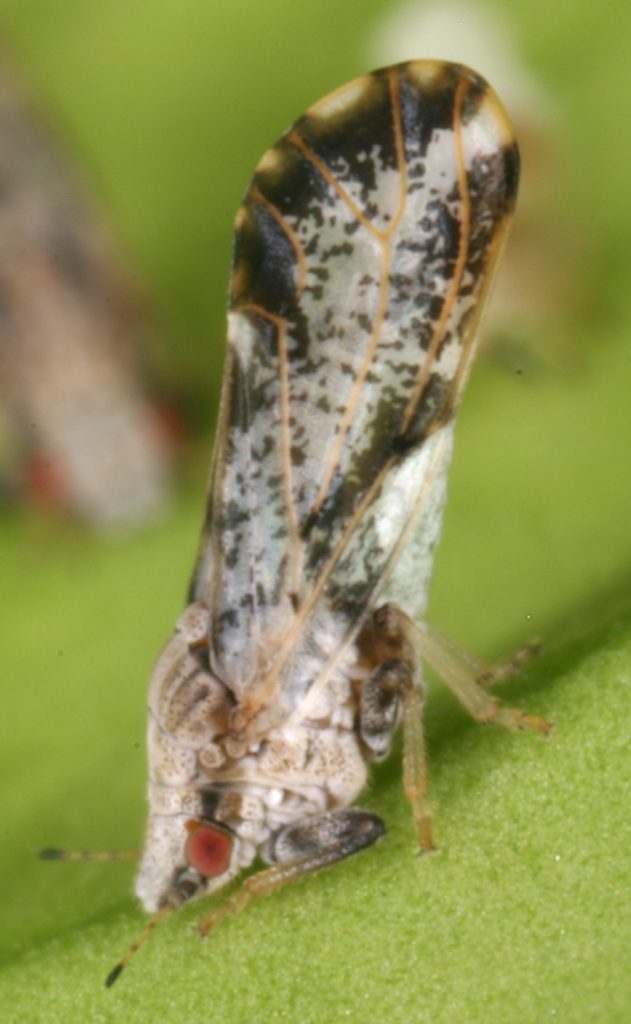Amy Belcher, Alabama Department of Agriculture and Industries
A plant disease that presents a serious threat to the U.S. citrus industry has been detected in Alabama. Federal and state plant health officials have confirmed the identification of Citrus Greening (CG), also known as Huanglongbing or HLB, which is caused by the bacterial pathogen Candidatus Liberibacter asiaticus.
This is the first confirmation of citrus greening in Alabama, despite biannual surveys for the pathogen by the Alabama Department of Agriculture and Industries (ADAI). The ADAI, along with the USDA Animal Plant Health Inspection Service (APHIS) and the U.S. Department of Homeland Security Customs and Border Protection (CBP), will be conducting a delimiting survey to determine the extent that the pathogen may have spread. If the disease is limited to only a few trees, steps will be taken to eradicate the disease.
Citrus greening was found in leaf and insect samples from a residential property on Dauphin Island in Mobile County. ADAI officials have devised a plan of action. Surveillance teams will take additional samples for testing, survey the area around the site, and gather data on the tree’s history, if possible. The delimiting survey will begin June 26, 2017, and should conclude by the end of the week. The citrus survey set to take place that week in the Wiregrass region will be postponed until the week of July 10th. Outreach and education to nurseries, plant dealers, and citrus hobbyists will be conducted concerning citrus greening in the near future as well.
Other than tree removal, there is no known cure or effective control for the disease once a tree is infected. Citrus greening reduces the quantity and quality of citrus fruits, eventually rendering infected trees useless. In areas of the world affected by citrus greening the average productive lifespan of citrus trees has dropped from 50 or more years to 15 or less. An infected tree declines and dies within 3 to 5 years. Before its eventual death, the tree produces fruit that is bitter and unusable and serves as a source of infection for other citrus trees in the surrounding area.
In our neighboring state of Florida, the citrus industry has been significantly affected by the rapid spread of citrus greening. According to a study conducted by University of Florida’s Institute of Food and Agricultural Sciences Extension, since the first detection of citrus greening in Florida in 2005, orange acreage has been reduced by 26% and yield has decreased by 42%. Orange production dropped from 242 million boxes to 104.6 million boxes in 2014. Overall the impact on the citrus industry has been devastating.
The disease-causing bacteria are spread by the Asian citrus psyllid (ACP). The insect was found in Baldwin County, Alabama in 2008, but no citrus greening bacteria was detected, even though molecular analysis of insects collected in the area was conducted. The discovery of psyllids in 2008 led to federal and state ACP quarantines of the entire State of Alabama in 2009.
Officials have begun the process to halt the movement of citrus plants from the area. With the confirmation of citrus greening in Dauphin Island, federal plant officials will seek to establish a citrus greening quarantine in Mobile County. Alabama agriculture officials have indicated that the state intends to take action to establish a parallel quarantine. The dual action makes it possible for federal regulators to hold the quarantine for CG only for those counties in Alabama in which the disease is present.
Citrus greening has been in Asia and Africa for decades. It was detected in Brazil in 2004 and Florida in 2005. For more information about citrus greening or questions about the delimiting survey, please contact Christel Harden by email at Christel.Harden@agi.alabama.gov or by phone at 334-240-7226.
- November 2025 Weather Summary & Winter Outlook - December 5, 2025
- Friday Feature: The History of Beekeeping - December 5, 2025
- Friday Feature:Malone Pecan Festival Tractorcade - November 21, 2025


